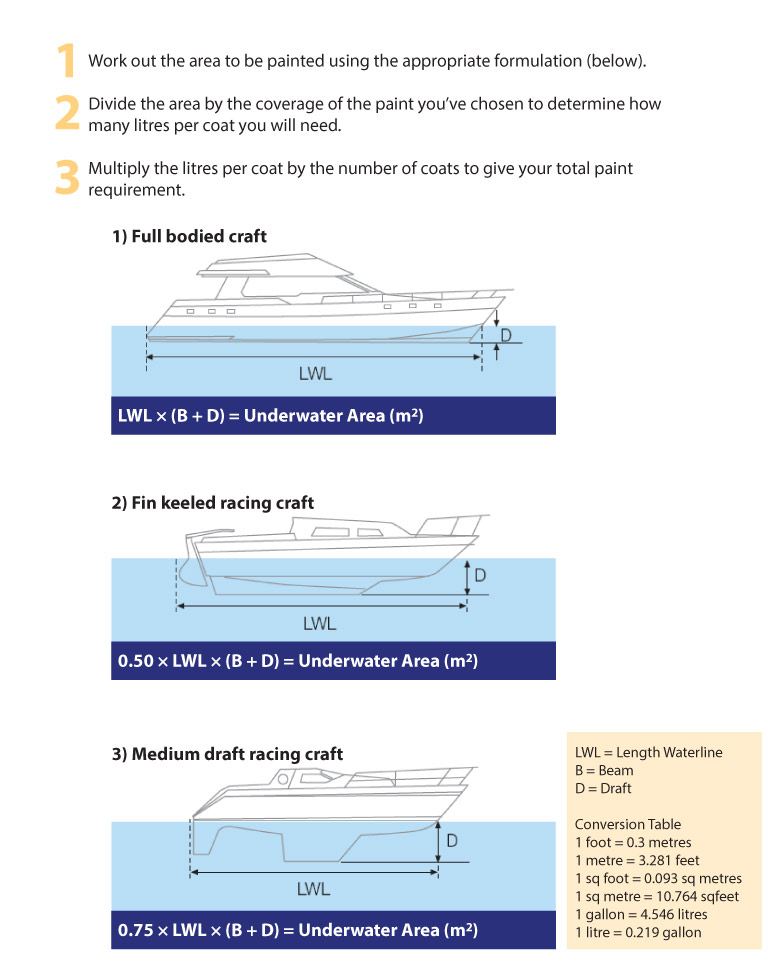Antifouling Paint Guide - What Is It and Why Do You Use It?
This is helpful information on antifouling coatings used on your boat. It comes from boat painting manuals by Hempel, International Paints, and Seajet. Pick up any of these manuals in your local Force 4 Chandlery.
What Is Antifoul?
Antifoul, or antifouling paint, is a protective coating applied to a boat's hull. It is used to prevent the growth of marine organisms such as barnacles, algae, and weeds.
How Does Antifouling Work?
Antifouling paints release bioactive ingredients. The bioactive materials used today are mainly cuprous oxide and booster organic biocides. They're water-soluble and, when released, lethal to fouling organisms. This helps to keep the surface of your boat's hull smooth and efficient.
Why Antifoul Your Boat?
"Fouling not only makes a boat look unsightly, it can also foul propellers and outdrives, block engine water inlets and outlets, slow down the boat speed, increase fuel costs and ultimately damage the hull substrate/surface.” - Hempel
Antifouling Paints are used on boats to:
- protect the substrate/surface of the hull
- avoids undue hull roughness (roughness increases resistance through the water, causing lower speeds and consuming more fuel.)
Environmental factors like sunlight, salinity, and water quality influence fouling rates. Higher growth is usually found near the exposed areas around the waterline and rudder. By applying antifouling paint, you can keep your boat in peak condition. This helps to save money on fuel, make it more efficient and avoid costly hull repairs.
What Different Types Of Antifouling Paint Are There?
Different types of antifouling paint release biocides/toxicants in different ways. Here are the three main types:
Self polishing / Erodible Antifouling
Self-polishing antifouling is designed for consistent, long-lasting performance throughout the season. Made with resins containing biocides, the paint gradually wears away when exposed to water. It continuously reveals fresh biocide layers to repel fouling organisms.
This slow, controlled breakdown prevents excessive paint buildup over time, making it a great choice for cruising boats and yachts.
- Best for: Cruising motorboats and sailboats (up to 25 knots).
- Advantages: Reduced maintenance, even performance, and minimized old paint layers.
Hard Antifouling
Hard antifouling creates a durable, non-eroding surface packed with biocides. Highly resistant to wear and scratching, it is ideal for boats stored on mud berths or operating at high speeds.
Unlike self-polishing antifouling, hard coatings do not wear away. This means any leftover paint must be sanded off at the end of the season.
For racing yachts and powerboats, polishing this type of paint before launch gives a smooth finish. This smoothness helps improve speed and fuel efficiency.
- Best for: High-speed motorboats, racing yachts, and mud-berthed vessels.
- Advantages: Long-lasting protection and smooth, hard surface for performance.
Traditional/Soft Antifouling
Traditional antifouling, also known as soft antifouling, uses a simple resin that gradually dissolves in water to release biocides. While it offers effective protection at a lower cost, this type of paint erodes faster and requires annual reapplication.
It is well-suited for those looking for a budget-friendly option or for boats in less demanding conditions.
- Best for: Boats in calmer waters or those requiring cost-effective seasonal protection.
- Advantages: Affordable and effective for short-term use.
What Antifouling Should I Use On My Boat?
For Cruising Motor and Sailing Boats (up to 25 knots)
- Recommended Type: Self-Polishing/Erodible Antifouling
- Why Choose This?
- Gradually releases biocides throughout the season for consistent protection.
- Minimal maintenance and preparation required between seasons.
- Perfect for boats frequently launched and re-launched without needing a new coat.
For High-Speed Boats, Dry- or Mud-Berthed Vessels, and Aluminium Hulls
- Recommended Type: Hard Antifouling
- Why Choose This?
- Durable and scratch-resistant for the entire season.
- Ideal for vessels stored in challenging conditions, like mud berths.
- Aluminium boats require specially formulated hard antifouling for protection.
- May need sanding or polishing after the season.
For Racing Motorboats and Regatta Sailing Boats
- Recommended Type: Hard Antifouling
- Why Choose This?
- Provides a smooth, hard finish for enhanced speed and efficiency.
- Reduces drag, fuel consumption, and wear on the engine.
- Designed for competitive performance with a thinner, streamlined coating.
How Much Antifouling Paint Do I Need?
As hull designs vary you should only use this illustration and formula as a guide.



















